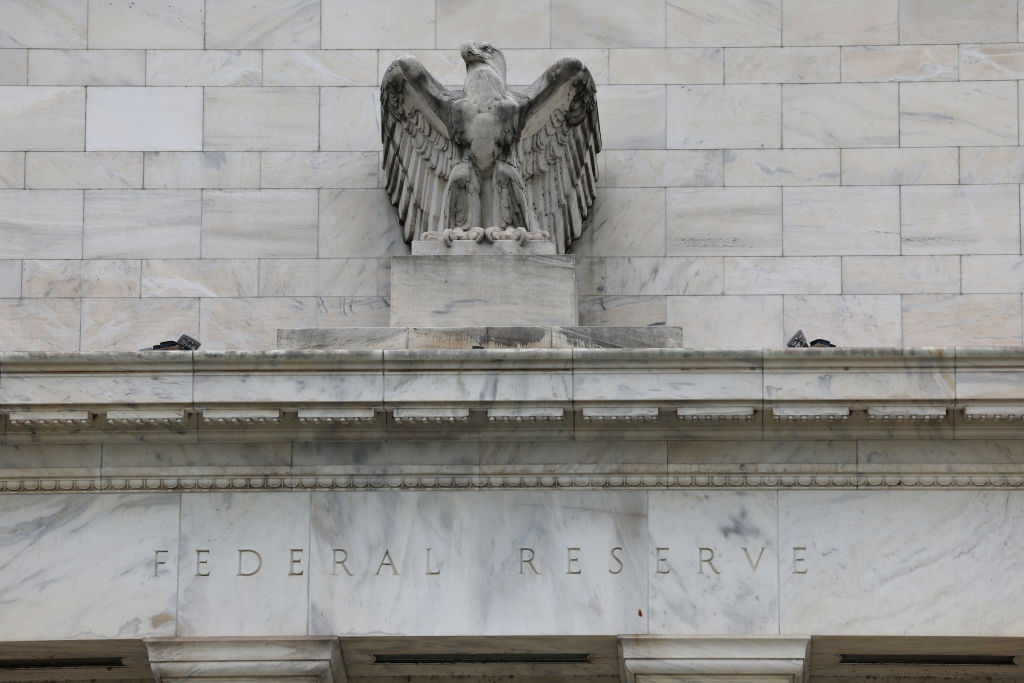Fed holds interest rates – but warns on inflation – ahead of Bank of England decision
The Fed's decision comes as markets grow increasingly nervy about the persistence of inflation after two consecutive overshoots.


The US Federal Reserve has left interest rates on hold for the fifth consecutive meeting while continuing to forecast three rate cuts in 2024 despite the risk of persistent inflation.
The decision means the federal funds rate will remain at a 23-year high, standing in a range of 5.25 to 5.50 per cent.
The decision on Wednesday evening London time sets the stage for the Bank of England to make an expected similar call at noon on Thursday.
In a statement the rate-setting Federal Open Market Committee (FOMC) said: “The Committee does not expect it will be appropriate to reduce the target range until it has gained greater confidence that inflation is moving sustainably toward two per cent.”
The Fed said that economic activity remained solid while the labour market was strong.
“Inflation has eased over the past year but remains elevated,” it said.
“The economic outlook is uncertain, and the Committee remains highly attentive to inflation risks,” the statement added.
The decision was widely expected by investors who were paying more attention to the latest ‘Dot Plot’ graph, which gives markets an indication of how many interest rate cuts policymakers think are likely.
The forecasts showed that policymakers still expected to cut rates three times in 2024, in line with the guidance given last December. This came even after growth and inflation were both revised higher.
Paul Ashworth, chief North America economist at Capital Economics, said the rate guidance for this year was “somewhat surprising”.
Equities climbed higher after the announcement while the dollar weakened. Markets had been nervy that the Fed might dial back its rate cut expectations given signs that inflation looks increasingly persistent.
Having fallen rapidly from a peak of over nine per cent, consumer prices have overshot expectations for two consecutive months at the start of 2024. In February, prices rose 0.4 per cent month-on-month, meaning the headline rate of inflation picked up to 3.2 per cent.
Looking longer term, there has been little progress on inflation since last summer, when inflation dropped to three per cent.
The core personal consumption expenditure (PCE) index, the Fed’s preferred measure of inflation, also rose in January with prices climbing 0.4 per cent.
“Stronger growth, lower unemployment, higher inflation – and yet still no change to the median dot,” Seeme Shah, chief global strategist at Principal Asset Management said.
“This Summary of Economic Projections suggests that the Fed is willing to risk cutting rates before inflation is close to target and while GDP growth is above-trend. History teaches us this is a risky path,” she continued.
At the turn of this year, markets thought it was very likely rates would be reduced in March but now investors think rate cuts will begin in the summer. There is now a 70 per cent chance of a June cut, up from 59 per cent before the meeting, according to CME’s Fedwatch tool.
Policymakers can afford to wait a little longer to ensure inflation is decisively under control before cutting rates given the strength of the US economy. The world’s largest economy grew 2.5 per cent last year, accelerating from its 2022 performance.
The Fed’s decision comes ahead of the latest rate announcement from the Bank of England tomorrow. Interest rates are likely to be left on hold, with investors also only expecting rate cuts to begin in the summer.



